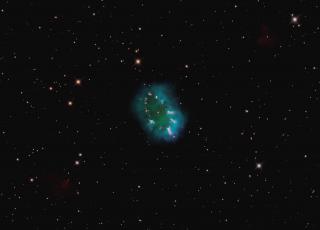Bibcode
Barker, H.; Zijlstra, Albert; De Marco, Orsola; Frew, David J.; Drew, Janet E.; Corradi, R. L. M.; Eislöffel, Jochen; Parker, Quentin A.
Bibliographical reference
Monthly Notices of the Royal Astronomical Society, Volume 475, Issue 4, p.4504-4523
Advertised on:
4
2018
Citations
23
Refereed citations
19
Description
The majority of planetary nebulae (PNe) are not spherical, and current
single-star models cannot adequately explain all the morphologies we
observe. This has led to the Binary Hypothesis, which states that PNe
are preferentially formed by binary systems. This hypothesis can be
corroborated or disproved by comparing the estimated binary fraction of
all PNe central stars (CS) to that of the supposed progenitor
population. One way to quantify the rate of CS binarity is to detect
near infrared excess indicative of a low-mass main-sequence companion.
In this paper, a sample of known PNe within data release 2 of the
ongoing VPHAS+ is investigated. We give details of the method used to
calibrate VPHAS+ photometry, and present the expected colours of CS and
main-sequence stars within the survey. Objects were scrutinized to
remove PN mimics from our sample and identify true CS. Within our final
sample of seven CS, six had previously either not been identified or
confirmed. We detected an i-band excess indicative of a low-mass
companion star in three CS, including one known binary, leading us to
conclude that VPHAS+ provides the precise photometry required for the IR
excess method presented here, and will likely improve as the survey
completes and the calibration process finalized. Given the promising
results from this trial sample, the entire VPHAS+ catalogue should be
used to study PNe and extend the IR excess-tested CS sample.
Related projects

Bipolar Nebulae
This project has three major objectives: 1) To determine the physico-chemical characteristics of bipolar planetary nebulae and symbiotic nebulae, to help understanding the origin of bipolarity and to test theoretical models, mainly models with binary central stars, aimed at explaining the observed morphology and kinematics. 2) To study the low
Antonio
Mampaso Recio